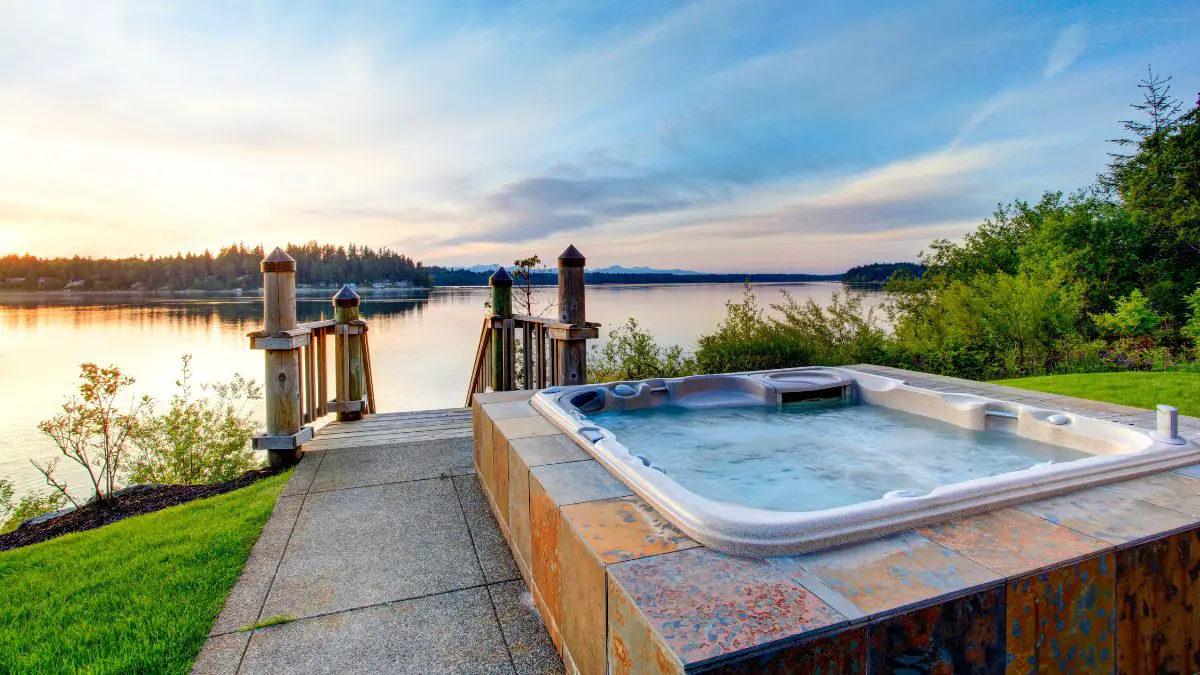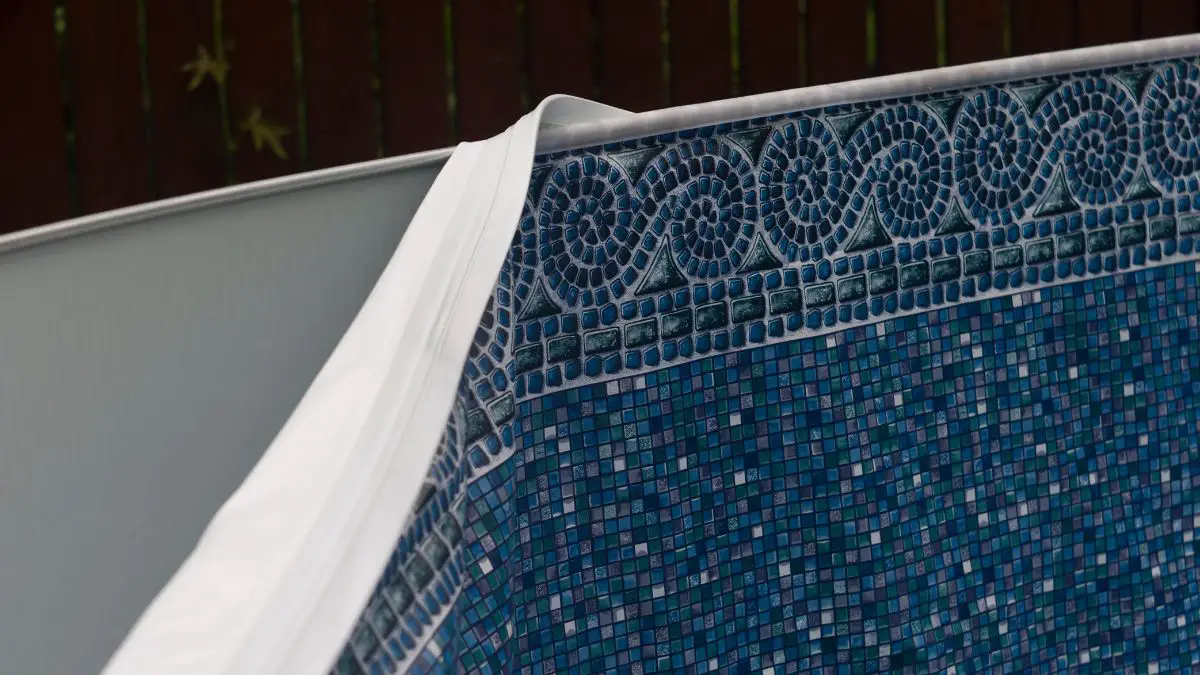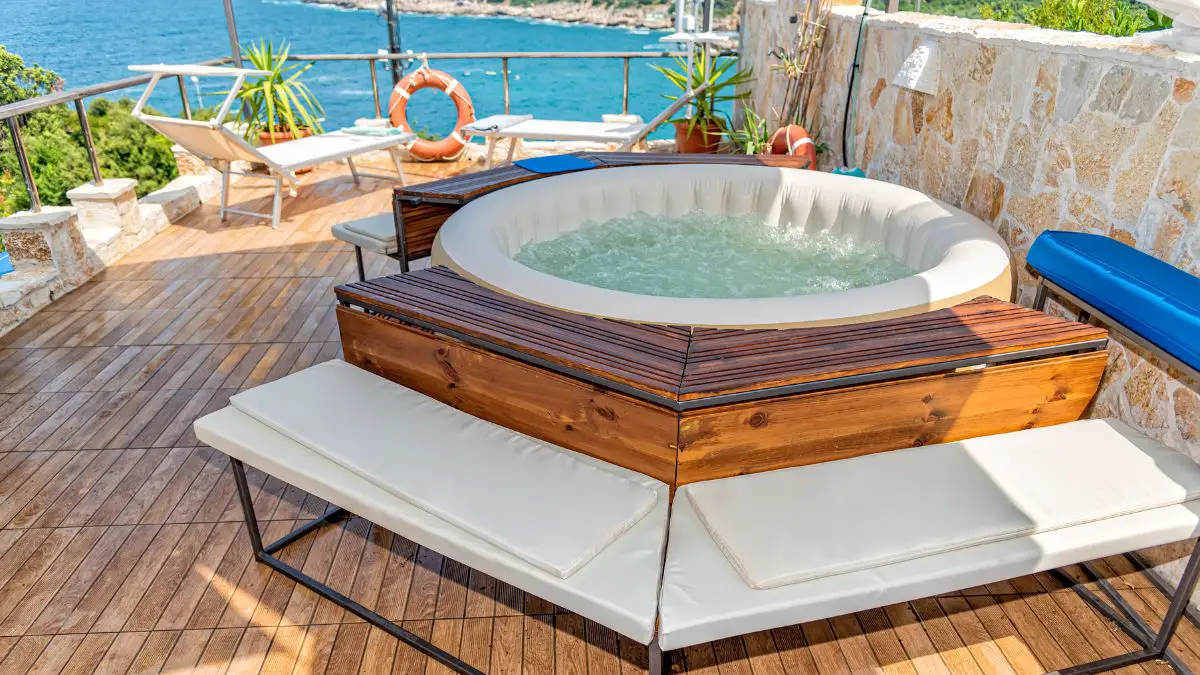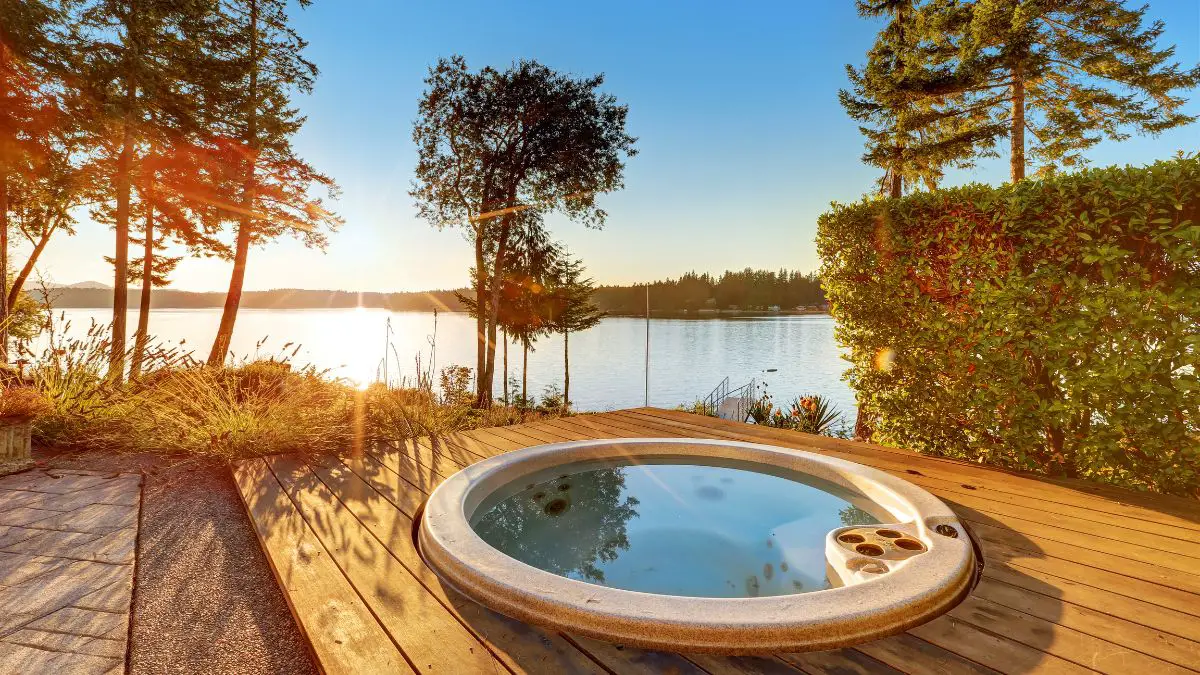Understanding the cost to fill a pool with water is more than just a simple calculation. It’s a crucial part of planning and maintaining your swimming pool. Whether you’re a new pool owner or a seasoned veteran, knowing the cost to fill a pool can help you budget effectively and avoid unexpected expenses.
Imagine a hot summer day, the sun is shining, and all you want to do is take a refreshing dip in your pool. But wait, the pool is empty. Now, you’re faced with the task of filling it up. You might wonder, “How much is this going to cost me?”
Well, you’re in the right place. This article will guide you through the various factors that contribute to the pool water cost. It’s not just about the volume of water your pool can hold. The cost per gallon of water, your location, the water source, and even the time of year can significantly impact the overall cost.
Filling a pool with water involves costs that depend on the size of your pool, your location, and the type of water source you use. On average, filling a 20,000-gallon pool using municipal water could cost between $80 to $200, while using a water delivery service could cost around $1000.
By the end of this article, you’ll have a comprehensive understanding of how much it costs to fill a pool with water. You’ll be equipped with the knowledge to make informed decisions about your pool maintenance, whether you’re filling a new pool, topping off an existing one, or planning for routine water changes.
| Key Takeaways |
|---|
| Evaporation is the primary cause of water loss in swimming pools, accounting for up to 70% of water loss. |
| Using a pool cover when the pool is not in use can significantly reduce evaporation, by up to 95%. |
| Pool covers help retain heat in the pool, reducing the energy demands of pool equipment. |
| A pool cover can decrease the amount of chemicals needed for the pool, reduce debris, and lessen the operating time for the pump and filter. |
| Water features like waterfalls or jets increase the surface area of water exposed to the sun and air, accelerating evaporation. |
| Turning off water features when they’re not in use can save money on water and chemicals. |
| Water evaporation increases with temperature, as warmer water molecules move faster and transition into vapor more readily. |
| The process of evaporation is more pronounced when the pool water temperature exceeds the air temperature. |
| Keeping pool water cooler can resist evaporation and save on water costs. |
| Minimizing evaporation is an effective strategy for conserving water and reducing pool maintenance costs. |
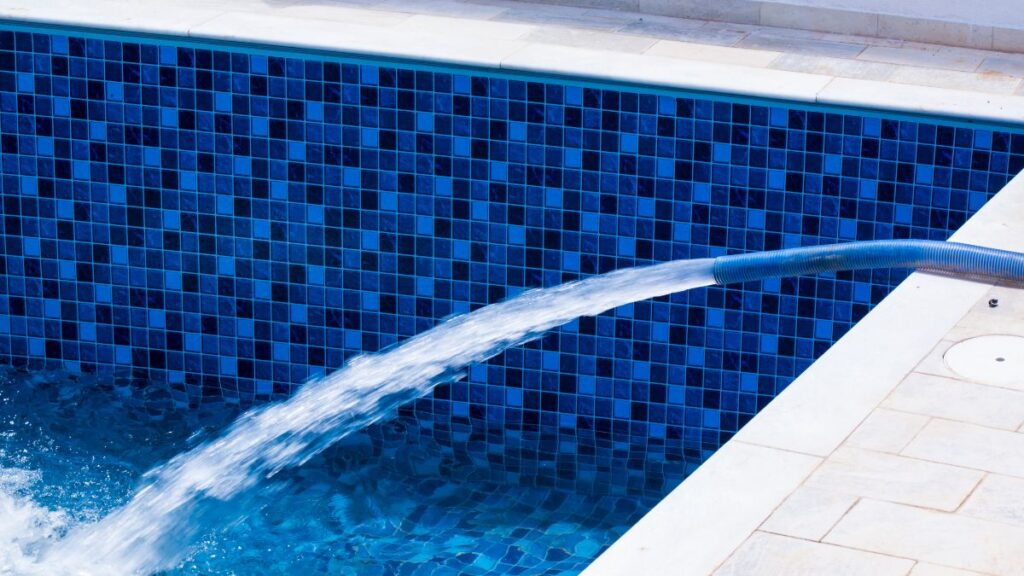
Factors Affecting the Cost to Fill a Pool
When it comes to understanding the cost to fill a pool with water, several factors come into play. Let’s break down these elements to give you a clear picture of what you might expect to pay.
Size of the Pool
First and foremost, the size of the pool is a significant determinant of the pool water cost. Naturally, a larger pool requires more water, which increases the cost.
Consider this: a small, above-ground pool might hold around 5,000 gallons of water. On the other hand, a large, in-ground pool could contain up to 30,000 gallons or more. That’s a substantial difference in volume, and it directly impacts how much it costs to fill a pool with water.
Location and Local Water Rates
Next, your geographical location and the local water rates in your area play a crucial role in determining the cost to fill a pool. Water rates can vary significantly from one region to another. For instance, the cost of water in California might be higher than the cost of water in Texas or Florida due to differences in water availability and local regulations.
Moreover, some municipalities may charge additional charges during drought conditions or peak usage times, which can further increase the cost to fill a pool with water.
Type of Water Source
Finally, the type of water source you use to fill your pool is another essential factor. There are typically three options: municipal water, well water, and water delivery services.
- Municipal water is the most common source for filling a pool. It’s convenient and usually quite affordable. However, the cost per gallon of water from a municipal source can vary based on local water rates.
- Well water is an option if you have access to a private well. While this can be a cost-effective choice, it’s important to consider the quality and safety of the water. You may need to treat well water before using it in your pool, which adds to the overall pool water cost.
- Pool Water Delivery Service provide water directly to your pool, which can be a great option if you need to fill your pool quickly or if your local water supply is limited. However, this is typically the most expensive option and can significantly increase the cost to fill a pool with water.
By understanding these factors, you can better estimate how much it costs to fill a pool with water and plan accordingly. Whether you’re setting up a new pool or maintaining an existing one, being aware of these costs can help you budget effectively and ensure that your pool remains a source of enjoyment rather than a financial burden.
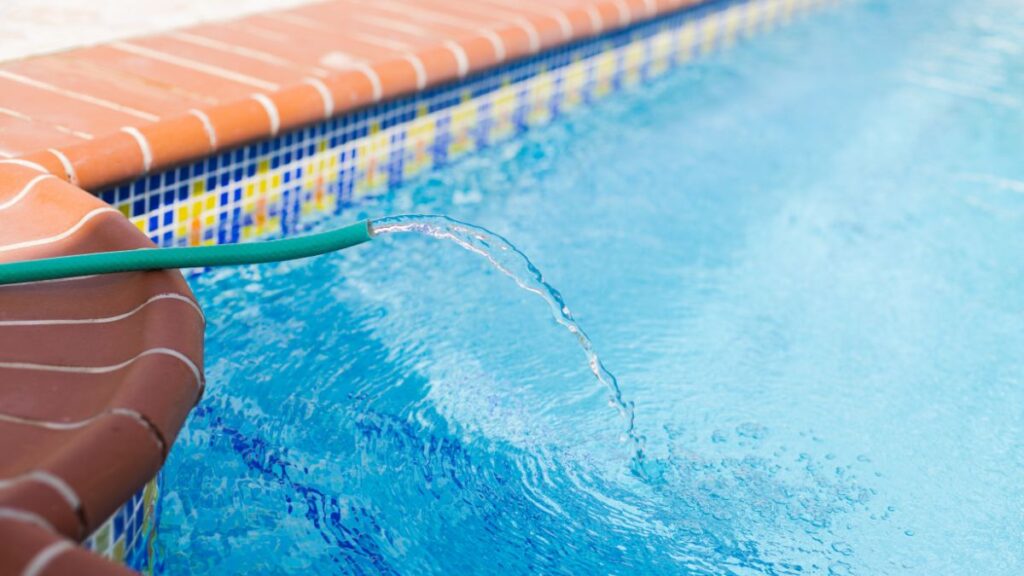
Average Cost to Fill a Pool
Now that you understand the factors that influence the cost to fill a pool with water, let’s delve into the average costs you might expect to encounter.
Cost Per 1000 Gallons
The cost per 1000 gallons of water is a standard measurement used by many water providers. This rate can vary widely depending on your location and the type of water source.
On average, you might expect to pay between $4 and $10 per 1000 gallons of municipal water. This range accounts for the variability in local water rates across different regions. For instance, the cost per gallon of water in drought-prone areas or cities with high living costs might be on the higher end of this range.
If you’re using a water delivery service, the cost per 1000 gallons can be significantly higher, sometimes reaching up to $50 or more. This is due to the convenience and speed of the service, especially if you need to fill your pool quickly or have limited access to municipal or well water.
Total Cost for an Average-Sized Pool
So, how much does it cost to fill a pool with water? Let’s consider an average-sized in-ground pool, which typically holds around 20,000 gallons of water.
Using municipal water, the cost to fill such a pool would range from $80 to $200, based on the average cost per 1000 gallons mentioned earlier. This is a rough estimate and can vary based on your local water rates.
If you’re using a water delivery service, the cost could be significantly higher. At a rate of $50 per 1000 gallons, you could expect to pay around $1000 to fill a 20,000-gallon pool.
Remember, these are just averages. The actual cost to fill a pool with water in your specific situation could be lower or higher based on the factors we discussed earlier: the size of your pool, your location and local water rates, and the type of water source you use.
In conclusion, while the cost to fill a pool can be a significant expense, it’s an essential part of owning and enjoying a pool. By understanding these costs, you can budget effectively and ensure that your pool remains a source of fun and relaxation for years to come.
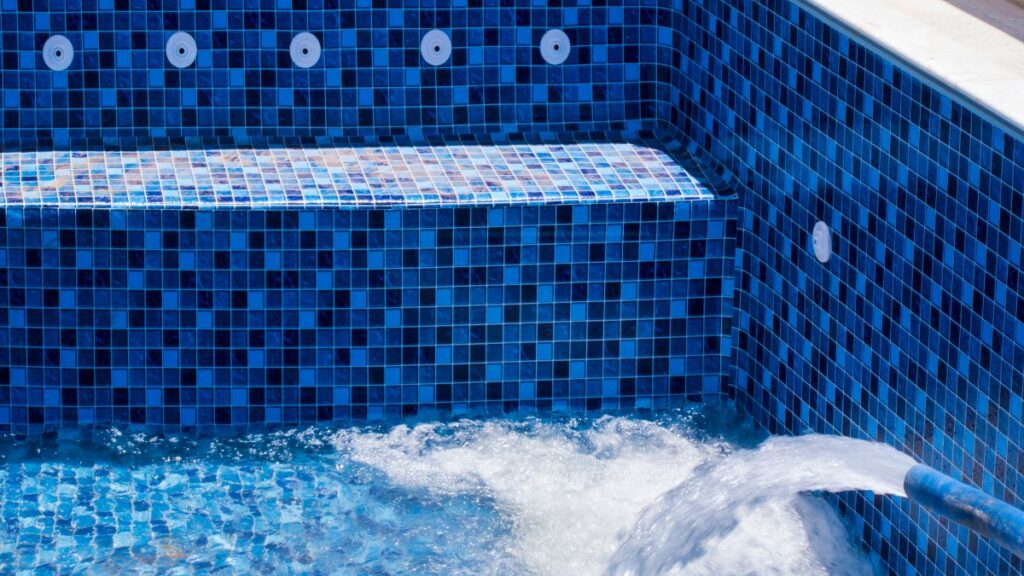
Cost Breakdown Based on Pool Size
The size of your pool is a significant factor in determining the cost to fill a pool with water. Let’s break down the costs based on small, medium, and large pools to give you a clearer picture of what you might expect to pay.
Cost for Small Pools
Small pools, such as kiddie pools or small above-ground pools, typically hold between 1,000 and 5,000 gallons of water. Using the average cost per gallon of water from a municipal source, you could expect to pay between $4 and $50 to fill a small pool.
However, if you’re using a water delivery service, the cost to fill a pool of this size could be significantly higher, potentially reaching up to $250.
Cost for Medium-Sized Pools
Medium-sized pools, including many residential in-ground pools, typically hold between 10,000 and 20,000 gallons of water.
With municipal water, the cost to fill a pool of this size would likely range from $40 to $200. If you’re using a water delivery service, the cost could increase substantially, potentially reaching up to $1,000.
Cost for Large Pools
Large pools, such as those found at community centers or hotels, can hold 30,000 gallons of water or more.
To fill a large pool with municipal water, you might expect to pay between $120 and $300. However, if you’re using a water delivery service, the cost to fill a pool of this size could be as high as $1,500 or more.
Remember, these are just estimates. The actual cost to fill a pool with water can vary based on your local water rates and the type of water source you use.
In conclusion, the size of your pool plays a significant role in determining the cost to fill a pool with water. By understanding these costs, you can budget effectively and ensure that your pool remains a source of enjoyment for you and your family.

Cheaper Methods to Fill a Pool
While filling a pool can be a significant expense, there are ways to reduce the cost to fill a pool with water. Let’s explore some cost-effective methods that can help you save money while still enjoying your pool.
Using a Hose
One of the most straightforward and cost-effective methods to fill your pool is by using a average garden hose connected to your home’s water supply. This method is convenient and doesn’t require any special equipment or services.
The cost to fill a pool using a hose will depend on your local water rates. However, it’s typically cheaper than using a water delivery service. Just keep in mind that filling a large pool with a hose can take a considerable amount of time, so plan accordingly.
Using Well Water
If you have access to a private well, this can be another cost-effective method to fill your pool. The cost to fill a pool with water from a well is often lower than using municipal water, as you’re not subject to local water rates.
However, it’s important to note that well water may contain minerals or other substances that could affect your pool’s water quality. You may need to treat the water after filling your pool to ensure it’s safe and comfortable for swimming.
Other Cost-Saving Tips
There are also other ways to reduce the cost to fill a pool with water. Here are a few tips:
- Water Conservation: By taking steps to conserve water in your pool, you can reduce the need for frequent refills. This includes covering your pool when it’s not in use to reduce evaporation, checking regularly for leaks, and maintaining your pool’s chemical balance to prevent water quality issues that could require you to drain and refill the pool.
- Off-Peak Water Usage: Some municipalities offer lower water rates during off-peak hours. Filling your pool during these times can help you save on your water bill.
- Rainwater Harvesting: If you live in an area with regular rainfall, you might consider setting up a rainwater harvesting system. This can provide a free source of water for your pool, although you’ll need to ensure the water is treated and safe for swimming.
In conclusion, while the cost to fill a pool with water can be a significant expense, there are ways to reduce these costs. By exploring these cheaper methods and cost-saving tips, you can enjoy your pool without breaking the bank.
More Expensive Methods to Fill a Pool
While there are cost-effective ways to fill your pool, there are also more expensive methods that offer certain benefits. Let’s explore these options and why you might consider them despite the higher cost to fill a pool with water.
Using a Water Delivery Service
A water delivery service is a convenient and ideal option that can save you a lot of time, especially if you need to fill a large pool or if your home’s water supply is limited. These services deliver water directly to your pool, often in a matter of hours.
However, this convenience comes at a price. The cost to fill a pool using a water delivery service can be significantly higher than using a hose or well water. You’re not just paying for the water itself, but also for the delivery and the time saved.
Despite the higher cost, a water delivery service can be a worthwhile investment in certain situations. For instance, if you’re opening a new pool for the season and want it filled quickly, or if you’re hosting an event and need the pool ready in a short timeframe.
Using Purified or Treated Water
Another more expensive method to fill your pool is by using purified or treated water. This type of water has been processed to remove impurities and can provide a high-quality water source for your pool.
The benefit of using purified or treated water is that it can help maintain the balance of chemicals in your pool, potentially reducing the need for additional treatments or adjustments. This can result in clearer, cleaner water that’s more comfortable for swimming.
However, purified or treated water is typically more expensive than regular tap water or well water. The cost to fill a pool with water of this quality can be higher, but for some pool owners, the benefits outweigh the additional cost.
In conclusion, while these methods can increase the cost to fill a pool with water, they offer benefits that some pool owners may find valuable. Whether it’s the convenience of a water delivery service or the superior quality of purified water, these options are worth considering based on your specific needs and budget.

How to Calculate Cost to Fill Your Swimming Pool
To accurately estimate the initial cost to fill your swimming pool, you first need to determine your pool’s water capacity (pool volume). You can use our pool volume calculator for this, or apply the appropriate formula based on your pool’s shape, as detailed below.
Formula for a Circular or Oval Pool
The formula to calculate the capacity of a circular or oval pool is: Length x Width x Depth x 5.9.
For a round pool, the length and width will be identical. For an oval pool, these measurements will differ.
For instance, a round pool with a diameter of ten feet and an average water depth of five feet would have a capacity of 10 x 10 x 5 x 5.9, or 2,950 gallons. An oval pool measuring 15 feet in length, 10 feet in width, and a maximum depth of five feet would have a capacity of 10 x 15 x 5 x 5.9, or 4,425 gallons.
If you reside in a drought-prone state like California, be aware of potential overuse fines and factor these into your calculations if necessary.
Formula for Square and Rectangular Pools
The formula for square and rectangular pools is: Length x Width x Depth x 7.5. For a square pool, the length and width will be the same. If your pool has varying depths, use the average depth for a reasonable water volume estimate.
For example, a square pool with sides measuring ten feet and a depth of five feet would have a pool capacity of 10 x 10 x 5 x 7.5, or 3,750 gallons.
A rectangular pool measuring ten feet in length, five feet in width, and an average depth of 7.5 feet would have a capacity of 10 x 5 x 7.5 x 7.5, or 2,812 gallons.
Calculating Cost
In the United States, approximately 129 gallons of water can be purchased for $1. Using this rate, we can estimate the following costs:
- 5,000 gallons would cost $38.84
- 10,000 gallons would cost $77.68
- 15,000 gallons would cost $111.11
- 20,000 gallons would cost $155.36
How to Minimize Water Evaporation from Your Pool?
Evaporation is the primary cause of water loss in swimming pools, with the Department of Energy estimating that up to 70% of pool water loss is due to evaporation. So, how can you minimize water evaporation from your pool? Here are some strategies.
Use a Pool Cover
The most effective way to minimize water evaporation is to cover your pool when it’s not in use. Pool covers can reduce evaporation by up to 95%. They also help retain heat in your pool, as they trap warmth inside.
When water evaporates, it takes with it the heat generated by your pool’s heat pump. A pool cover helps retain this heat, reducing the energy demands of your pool equipment.
Additionally, a pool cover can decrease the amount of chemicals and debris in your pool and reduce the operating time for your pump and filter.
Switch Off Your Pool’s Water Features
If your pool has additional features like waterfalls or jets, consider turning them off periodically. These features increase the surface area of water exposed to the sun and air, accelerating evaporation.
Turning off these features when they’re not in use can save you money on water and chemicals. You can switch them back on when you’re ready to entertain guests.
Reduce Your Pool’s Water Temperature
Water evaporation increases with temperature, as warmer water molecules move faster and transition into vapor more readily. This process is even more pronounced when the pool water temperature exceeds the air temperature.
By keeping your pool water cooler, you can resist evaporation and save on water costs. Keep this in mind if you’re looking to minimize evaporation and conserve water.
Frequently Asked Questions About Cost to Fill a Pool With Water
In this section, we’ll address some of the most frequently asked questions about the cost to fill a pool with water.
How much does it cost to fill a 10,000-gallon pool?
The cost to fill a 10,000-gallon pool can vary based on your local water rates and the type of water source you use. On average, using municipal water, you might expect to pay between $40 and $100. If you’re using a water delivery service, the cost could be significantly higher.
What is the cheapest way to fill a swimming pool?
The cheapest way to fill a swimming pool is typically by using a garden hose connected to your home’s water supply. However, if you have access to a private well, this can also be a cost-effective method. Remember to consider the quality and safety of the water in either case.
How much does it cost to fill up a 5,000-gallon pool?
The cost to fill a 5,000-gallon pool can range from $20 to $50 using municipal water, depending on your local water rates. If you’re using a water delivery service, the cost could be up to $250 or more.
How much does it cost to fill up a 4,000-gallon pool?
To fill a 4,000-gallon pool, you might expect to pay between $16 and $40 using municipal water. With a water delivery service, the cost could reach up to $200.
Remember, these are just estimates. The actual cost to fill a pool with water can vary based on several factors, including your location, the time of year, and the type of water source you use.
Conclusion
Navigating the world of pool ownership can be a complex journey, but understanding the cost to fill a pool with water is a crucial step. Whether you’re using a hose, well water, or a water delivery service, the cost can vary based on your pool’s size, your location, and local water rates.
Remember, a small pool will naturally cost less to fill than a large one. The pool water cost can also fluctuate based on your geographical location and the local water rates in your area. Moreover, the type of water source you use – whether it’s municipal water, well water, or a water delivery service – can significantly impact the overall cost.
While using a hose or well water can be cost-effective methods, they may require more time or additional water treatment. On the other hand, while more expensive, water delivery services offer convenience and speed, and using purified or treated water can provide a high-quality water source for your pool.
In the end, owning a pool is about more than just the cost of maintaining pool water. It’s about the joy and relaxation it brings to you, your family, and your friends. So, while the cost to fill a pool with water is an important consideration, it’s just one part of the broader pool ownership experience.
By understanding these costs and considering your specific needs and budget, you can make informed decisions that ensure your pool remains a source of enjoyment rather than a financial burden. Happy swimming!


